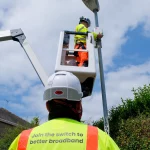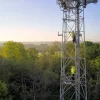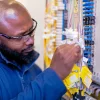O2 UK Trial 5G Mobile Broadband for “Smart” Ambulances
Mobile operator O2 UK and Samsung have announced that their latest trial of ultrafast mobile broadband connectivity will involve equipping a standard ambulance with simulated 5G connectivity, which they say could transform such emergency vehicles into a unique remote consultation room.
The trial, which is taking place this month as part of the on-going AutoAir project at the vehicular Millbrook Proving Ground in Bedfordshire (pictured), is also set to involve Visionable’s video collaboration software and Launchcloud’s asset tracking and compliance check elements.
The deployment of 5G based monitoring and remote consultation technology is intended to “enable paramedics to conduct on-board treatments through mobile expert consultation.” In theory it’s claimed that this could enable paramedics to treat more people with more ailments than currently possible and thus ease the strain on hospital resources.
Advertisement
As part of this the ambulance team will be expected to simulate an emergency call out, allowing paramedics to conduct checks, collect data and communicate with consultants remotely using the on-board equipment (e.g. Samsung’s Galaxy S10 5G phone). The paramedics will then be able to diagnose patients and recommend the appropriate treatment and next actions.
Derek McManus, COO of O2, said:
“It’s no secret there is increasing pressure on our health services. Healthcare is one of the areas set to benefit most from 5G technology, with faster, more effective treatment, and significant efficiency savings. That’s why we’re supporting the Smart Ambulance trials as part of the AutoAir 5G project to accelerate the adoption of connected and self-driving technology and unlock the benefits of 5G for communities and businesses alike.”
O2 is currently also providing the devices and connectivity for a similar trial involving six ambulances at the East of England Ambulance Trust, led by Visionable, and funded by the UK’s innovation agency Innovate UK. Admittedly in the real-world this sort of technology might be hindered by the limited coverage of 5G networks and others would probably argue that existing 4G networks could deliver a similar quality of service.
Mark is a professional technology writer, IT consultant and computer engineer from Dorset (England), he also founded ISPreview in 1999 and enjoys analysing the latest telecoms and broadband developments. Find me on X (Twitter), Mastodon, Facebook, BlueSky, Threads.net and Linkedin.
« Wi-Fi Alliance Start Certifying Next Gen 802.11ax Wireless Kit
Cityfibre UK to Appoint New Chairman Steve Holliday UPDATED »
















































Comments are closed